A love letter to the golden era of jrpg’s.
When it often comes to discussions around some of the best games of all time, JRPG’s often sit at the head of the table. Games like Final Fantasy VII, Chrono Trigger, Suikoden II, or Xenogears, are often talked about as the best of their genre. From the SNES to the PlayStation One era, each has its devoted followers, those who found something to love within those colorful sprites or crudely textured adventurers. Chained Echoes is the result of the love of that era, a game birthed from the admiration of those titles, and the result of seven years of dedication, passion, and purpose.
Chained Echoes is a game crafted by a single developer, Matthias Linda. However, I do want to point out that the game’s stellar soundtrack and sound design are performed by Eddie Marianukroh, with a few other individuals involved in the game’s key art, some backgrounds, and the game’s distribution through Deck 13 Spotlight, the publisher behind the absolutely stellar, Crosscode. Leading up to being picked up by the publisher, Chained Echoes had a rather successful Kickstarter, raising nearly $140,000 USD of a $63,000 goal across 4,655 backers.
Set in the war-torn continent of Valandis, three nations have battled for domination for six generations; Taryn, the kingdom to the north, Escanya to the south, and Gravos to the east. However, Chained Echoes begins with a catastrophic tragedy that sees thousands killed in a matter of mere seconds, an act so unexpected and sudden that each of these three nations agrees to sign a peace treaty, ending the war after 156 years in fear that one nation holds the key to their own destruction.
However, as these nations have only ever known war, ruled by those who were literally born into it, raised by those who consistently stoked the flames of war, this peace couldn’t and wouldn’t last and events are quickly set in motion to reignite those flames of war yet again. Chained Echoes features a cast of characters that are tied to the central points of this story, each molded by the kingdoms they grew up in; a product of their memories, sacrifice, and suffering.
Chained Echoes centers its story on Glenn, a young man who was taken in by the mercenary group, the Iron Bull. Alongside his close friend, Kylian, he is one of a few skilled pilots behind the operation of Sky Armors, mechanized battlesuits that can fly and pack devastating power. It is then on a mission for the Iron Bull that Glenn and Kylian find themselves at ground zero of the previously mentioned event that kickstarts that brief era of peace, a magical blast so powerful and devastating that Glenn will spend the next year obsessed with finding out what happened and how he and Kylian even survived its widespread devastation, to begin with.
Where Chained Echoes excels is in the building of its cast of characters around Glenn’s mission and how it ties into the grander story at play. While there are those who will join you in battle to simply aid a helping hand, there is a core cast of companions where each have significant ties to the political turmoil that engulfs these lands. Their desire to see this mission through is unique to each member of the cast and this gives them different things to fight for even when the end goal is shared amongst the group.
Glenn and Kylian’s desire to understand the devastating blast leads them to the kingdom of Escanya, where they will meet up with the bulk of the game’s central cast in a beautifully paced and memorable encounter. This cast includes Lenne, the princess of Taryn, who left her kingdom to see the world through the eyes of her people, and her protector in Robb, a nobleman who is constantly by her side. You then have the master thief in Sienna, who joins the group to avoid a confrontation with a gang that is hunting her down, as well as the long-lived Victor, a popular playwright whose stories are known the world over. Along their travels, Glenn and company will also add more to their group, those who are connected to the central plot in ways that almost make it feel as if destiny itself has had a hand in bringing them all together.
This group is built of a wide range of diverse personalities and those who come from entirely different walks of life, leading to some excellent conversations and arguments between them, seeing their very beliefs clash in ways that result in the story being wildly unpredictable and extremely satisfying. While certain reveals will lend more depth to each character, there are such layers to them right from the start that you immediately get hooked and curious about them in ways that most games fail at doing throughout entire arcs.
Even a few that join to simply add more variety to the cast and the types of weapons and attacks you have at your disposal, despite not being tied directly to the main story, are still wonderful additions that have their own personal arcs that add to the world that Matthias Linda has crafted here. While I didn’t find Egyl to be a terribly interesting character to join up with my team initially, it’s what he stands for that causes one of the main cast to truly reflect on who they are and what they want from life, making them a vital member of the team to induce such a change.
Each character across its diverse cast has a deep and rewarding backstory, including one that really shows that this game doesn’t shy away from being mature and violent without feeling like it’s doing it simply to be shocking or controversial. There is a delicate balance that Matthias pulls off here that allows his story to feel rooted in being genuine to the player and treating them as an adult with respect to their intelligence. The depths of maturity of this story is one of the reasons it stands atop most of its peers, and also prevents the narrative from becoming entirely predictable or boring.
Throughout the 30+ hours I sank into Chained Echoes, I was constantly on the edge of my seat with its story, breathing in the world and its lore, its characters, and its history. The flames of war that ignite this land place the group in situations that constantly remained entertaining, battles that are vastly engaging and tactical, and visiting rich and diverse locations that constantly impress, giving way to secret after secret as I used every tool in my kit to explore every pixel this game threw at me.
Even when revisiting old locations, I constantly found new parts of the environment to play around in, or even unique enemies that require certain conditions to even appear. Even now, after beating the game, I’ve seen that I missed an entire collective of secret boss encounters. The fact that I missed this, even while being incredibly thorough, just lends itself to some masterful level design.
As you explore all of Valandis, you’ll encounter enemies directly on the field in turn-based combat. While selecting from a list of abilities and spamming the best ones might be the standard formula that most are acquainted with, Chained Echoes requires you to reach deep into your moveset and utilized everything you have at your disposal as simply spamming the same attacks over and over again is an easy way to achieve failure.
Chained Echoes has what is referred to as an Overdrive meter, a bar that rests at the top left that consists of three colors; orange, green, and red. Each attack, swap of characters, or defending will affect the bar differently. As you perform a skill, a cursor under the bar will move to the right. If you defend, it moves to the left. The goal in combat is to keep the bar within the green segment. You can also select skills that have their type indicated in the slot next to the bar that can be used and have it move back to the left, ensuring that you have set each character to have variety amongst their available moves.
However. if you end up in the red, you’ll deal less damage and take more as a result. This forces you to act smart and use a variety of skills to keep yourself in the green, boosting your attack power and limiting how much damage you take, not to mention reducing the tech points needed to perform your skills. It’s a smart and engaging system that makes you get the most out of every skill you attach to each character, forcing you to carefully equip certain skills to each of your party members to get the most out of them.
To enhance this system even more, each character can have a partner to swap to, and this swap doesn’t prevent you from attacking within the same turn. This allows you to benefit from having up to eight characters to rely on in a single battle instead of just four. Where this gets even better is each encounter has you start with full health and tech points, meaning you can unleash everything you have across each fight without fearing how it will impact your next encounter. This causes the flow of combat and exploration to always feel like you can give your all each and every time and not have to worry about topping up everyone’s health or starting a battle with nearly depleted TP.
Each character has a wide range of skills and attacks, and even special all-out strikes called Ultras that vary from attacking everything on the field to providing stat increases for your party members. These skills can be immensely important during some of the more challenging encounters. When it comes to your standard arrangement of skills, you have attacks that can be strong against a single foe or some that spread out that damage across everything in front of you. You can also apply critical status effects to your enemies, such as dowsing them in oil before setting them ablaze or relying on Victor’s musical melodies to buff your team for a challenging fight. By grouping your team so that you can benefit from these combo-like maneuvers as you swap from party member to party member, it gives combat a very tactical approach that keeps battles constantly engaging without feeling like you are simply grinding away foe after foe.
In fact, Chained Echoes does away with experience points altogether. While you can and will level up, you do so by collecting Grimoire Shards, a currency that you’ll earn through a variety of means such as defeating bosses or earning them through the quest reward board, a tiled challenge system of certain feats and chaining them together will offer a variety of rewards such as those coveted Shards. This reward system is highly addictive as while some challenges are as simple as killing a number of a certain enemy type, others require you to explore the map, complete certain side quests, or track down each of the specialized class emblems.
These class emblems offer up bonus stats to who you equip them to but grant the user additional moves that they can master and permanently add to their list of available moves. So, if you want someone who isn’t a healer to always have a heal-all skill, you can equip the Cleric class to them, master that skill, and regardless of having the emblem equipped, they can use that skill going forward, if you so choose. While using that skill is the long road to mastering it, you also earn SP during battles that can be used to level up that skill quicker, provided you have the amount needed to do so.
Each of the class emblems are hidden around the map via statues of their paragon. Each statue can be interacted with by offering up sacred water, a somewhat rare item you'll stumble upon ever so often. You'll then be granted the class emblem should you defeat the challenge that awaits you. These battles are rarely difficult, with the real challenge being tracking down the statue instead. Several of these require you to really dig deep in moving around the environments and exploring every nook and cranny.
As you continue on your adventure, you’ll find a wealth of new weapons and armor, all of which can be leveled up a few times to increase their effectiveness. You’ll also rely on a variety of crystals that can fundamentally take an already impressive weapon and further increase its power. These crystals can be slotted into weapons and armor, and even fused together to make them more powerful while also reducing the number of slots they require to use. The abilities granted range all over from increasing damage of a certain weapon type to increasing your defense should your health drop drastically low. There are dozens of options here to tinker with, allowing you to min-max your team provided you have the currency to do so.
When surviving on foot just won't do, Glenn and company will eventually have access to a full suite of customizable Sky Armors, complete with a slight alteration on how combat works. Similar to the standard on-foot combat system, you'll want to remain in the overdrive section of the bar in the top left. How this works; however, is a bit different. Sky Armors operate in three gears; first, second, and zero. Battles start you out in first gear, which offers weaker versions of your current skills, with second gear being where your real power lies. Gear zero; however, only allows you to rely on your standard attacks or the ability to use items.
Much like standard combat, your attacks move around the overdrive bar. First-gear attacks move the cursor right on the overdrive bar whereas second-gear attacks move the cursor left. You can shift gears once to attack on the newly shift gear, but you can only shift once per turn, so there is a bit of wait to start moving back on the overdrive meter should you find yourself dangerously close to the red. This balances out the Sky Armor combat instead of having them absolutely trounce anything they encounter by only relying on the second gear attacks.
Sky Armors also vary in how their attacks work. As you start off with a low level weapon type, you'll have a limited selection of attacks. As you continue to use them, your arsenal of skills for each weapon increases. From great swords to energy canons, to support-skill drones, there is a lot of variety here to work with, especially as you can select the model of Sky Armor and its color from a wide selection of options. And, should you have the coin and track down the vendor, there is even a special Sky Armor to procure that is certainly worth the trouble.
Another perk of the Sky Armor is the ability to not only hover but to outright fly as well. Hovering can get you over some gaps and various level blocks, but flying can have you zip around to unreachable places that were otherwise inaccessible. There is a catch to this; however, as you cannot land on enemies or on tall grass, with some areas being designed in such a fashion to reduce or limit the Sky Armor’s presence. Some areas are also designed so that you need the smaller size of your character to move down alleys or tight passageways where the bulky and larger Sky Armor just won’t fit.
Right from the game’s first moments, you’ll take in its impressive sprite work and see it evolve throughout the game to offer up more complex and well-designed locations and characters. Everything here pops and best of all, nothing gets lost or blurred together, which can be a problem with some games of the genre. Valandis is full of a wealth of variety when it comes to its rich and plentiful locations; from the largest kingdoms and deserts to its smallest forests and forgotten cities. Each character and enemy has a wide range of animations that constantly impress, especially given how many attacks you have at your disposal.
The game boasts a bright and vibrant color palette, allowing everything to be immediately readable no matter the location. This benefits the use of climbable walls or crumbling rocks that block entry to a cave, it’s all readable without being overbearing like how most games have every single interactable object being painted yellow or its equivalent. Locations are packed with a great attention to detail including some environments that have beams of light shining through to make them feel like a more believable environment.
The character portraits for conversations are wonderfully executed, giving our little pixelated heroes a more detailed presence, adding to their already memorable existence. I also found the menu’s to be very readable as well with a bright white font that was extremely easy to read on the Steam Deck’s screen, and I imagine that this would be the case for sitting back from a ways from a TV or on the Switch’s screen as well.
Chained Echoes’ soundtrack is the last piece of the puzzle that brings a lot of this design together. Its opening theme starts with this almost haunted calm before it begins to pick up as if hope was still in need of being discovered, similar in every way to Glenn’s initial struggles to see his mission through. Then we have “Into the Storm” which is as JRPG as it gets, bringing in almost machine-like beats to really get you pumped. I also adored “Champions in the Sky” which reminded me a lot of the Xenoblade Chronicles 3 soundtrack, offering up a truly energizing track with some incredible highs as that song is purely electrifying. Nearly every piece of music here is solid, finding its footing to create tension, emotion, and excitement through its runtime. While this year has had some incredible music to go along with some breathtaking games. Eddie Marianukroh’s work here should be acknowledged and placed alongside this year’s best.
Chained Echoes was a pleasant surprise for me. I had seen glimpses of it here and there, and while I first was made aware of its via Gamepass, it wasn’t until I had the chance to review it that I really dived in. While the pixelated throwback to this era isn’t new for indie-based efforts, as every platform is packed full of them, rarely do we get one on this scale, offering a mature and beautifully well-told story alongside monumental music and character work that rival some of the best we see out of AAA. Chained Echoes is impressive, from top to bottom, offering up tactical and engaging combat, stunning visuals, and one hell of an ending. Chained Echoes may be inspired by some of the most celebrated JRPG’s of all time, but it also deserves to be held alongside them as well.
Developer - Matthias Linda. Publisher - Deck 13 Spotlight. Released - December 8th, 2022. Available On - PlayStation 4/5, Xbox One/Series X/S, Nintendo Switch, Windows. Rated - (M) Sexual Themes, Strong Language. Platform Reviewed - Steam Deck/PC. Review Access - A review code was provided by the publisher for the purpose of this review.


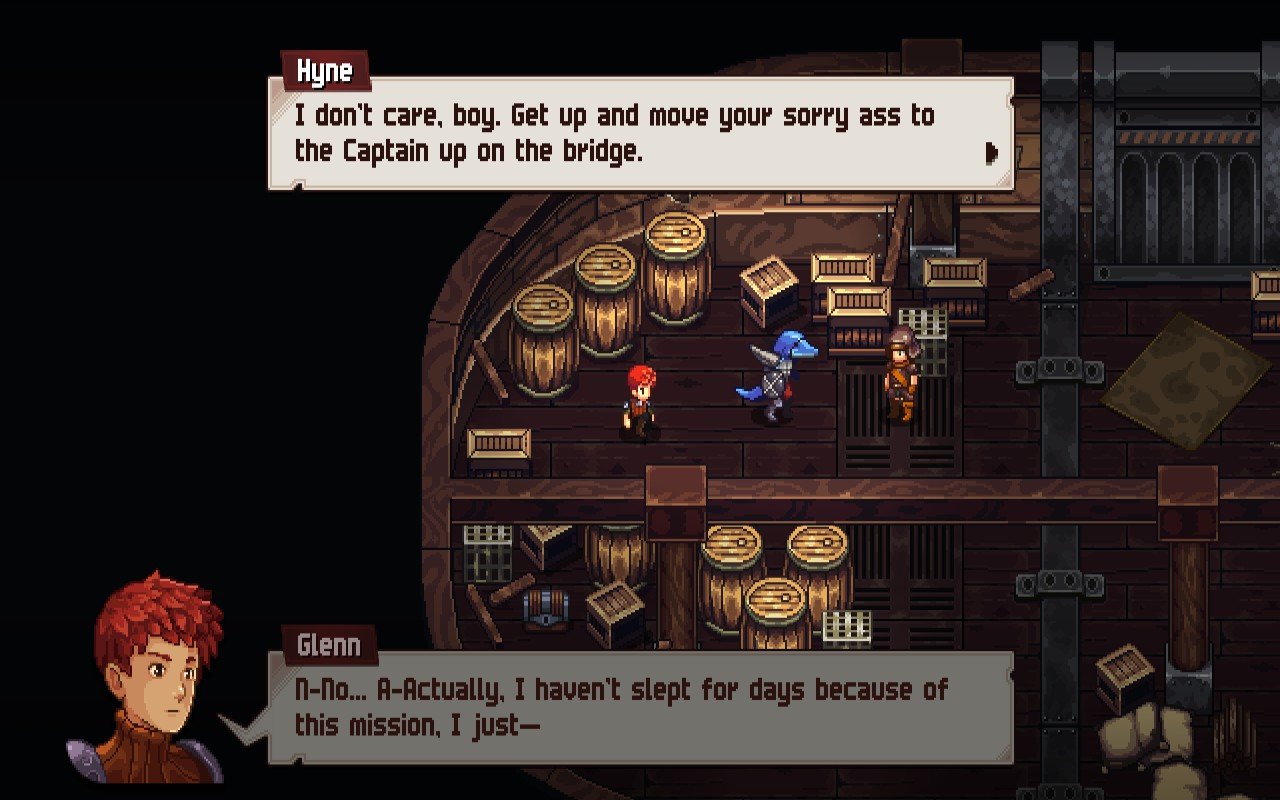

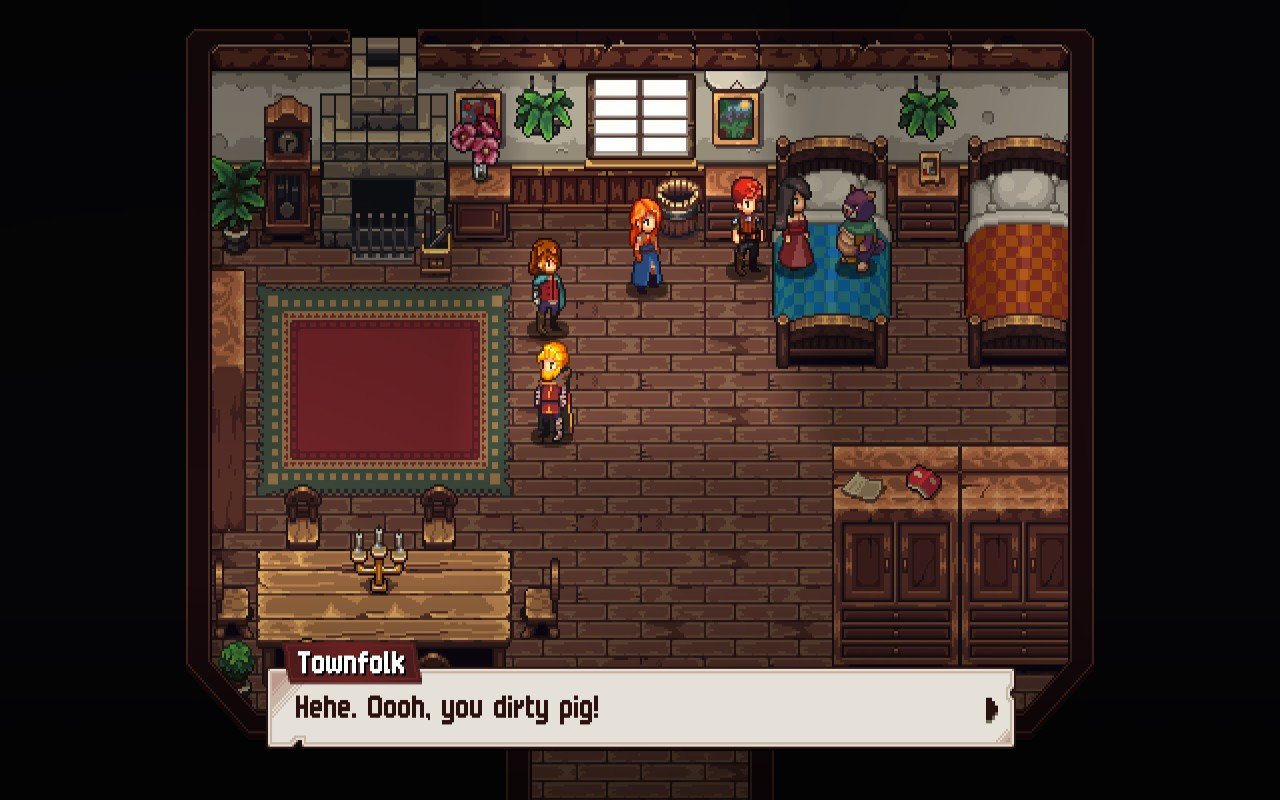
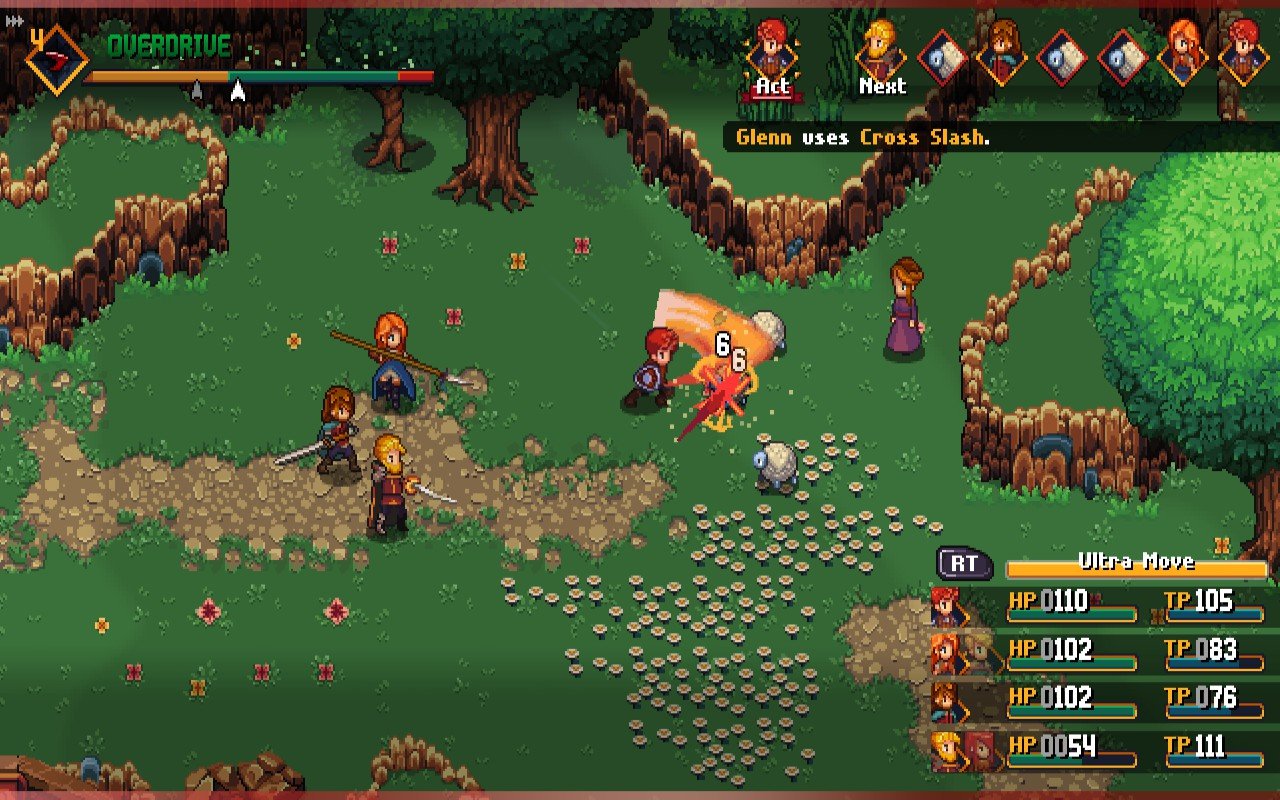
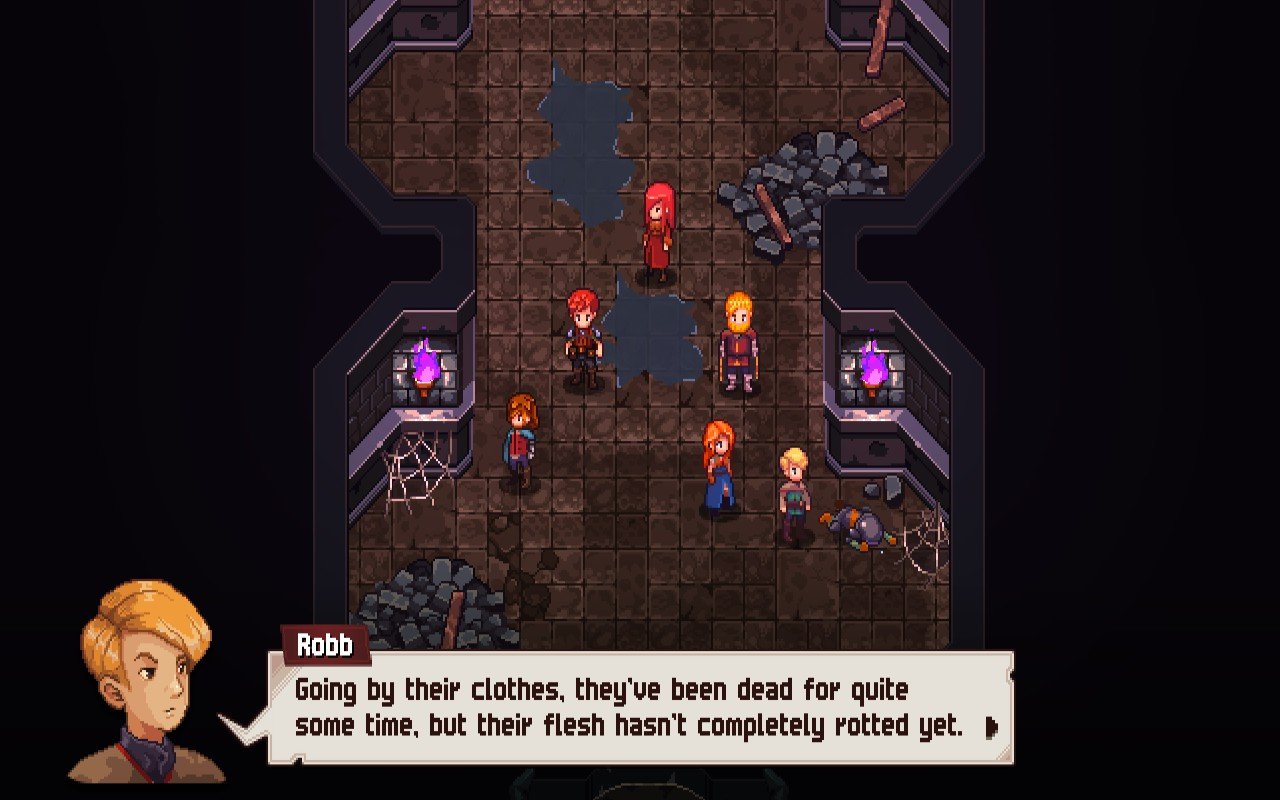

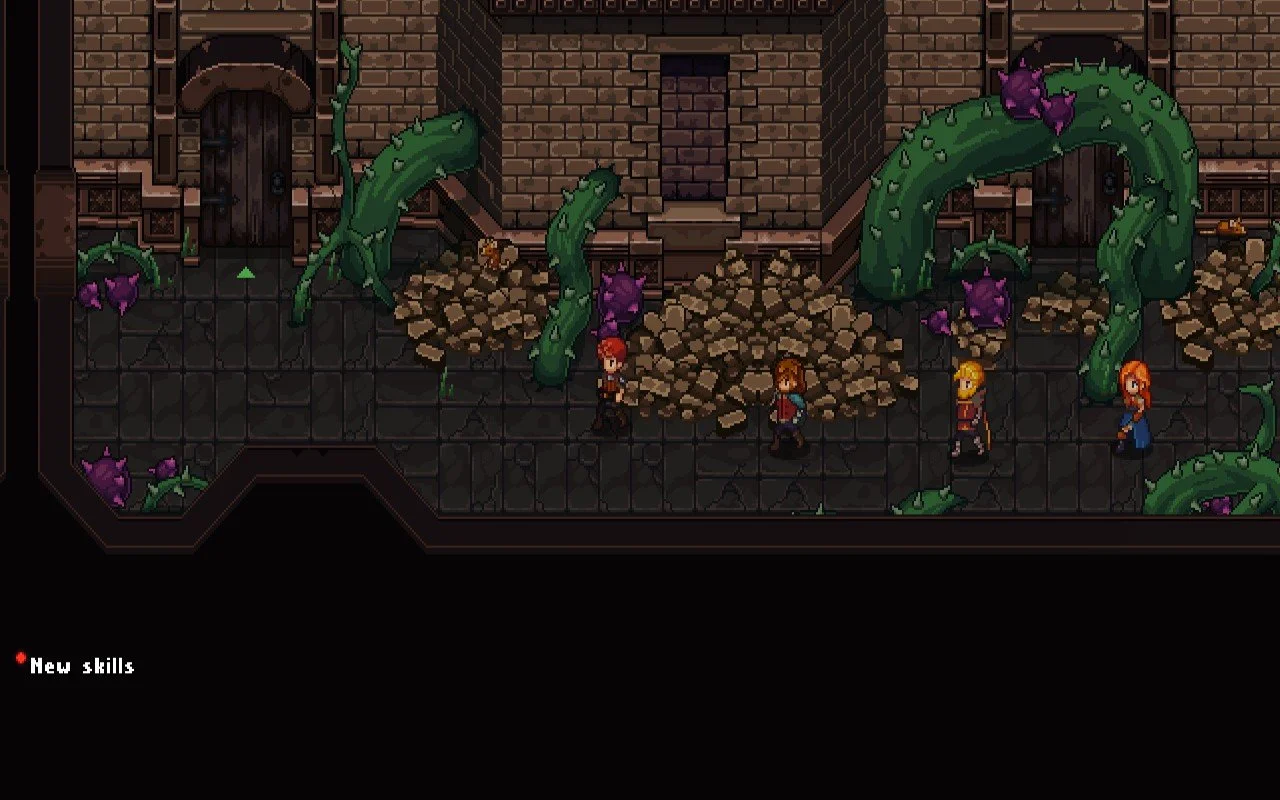


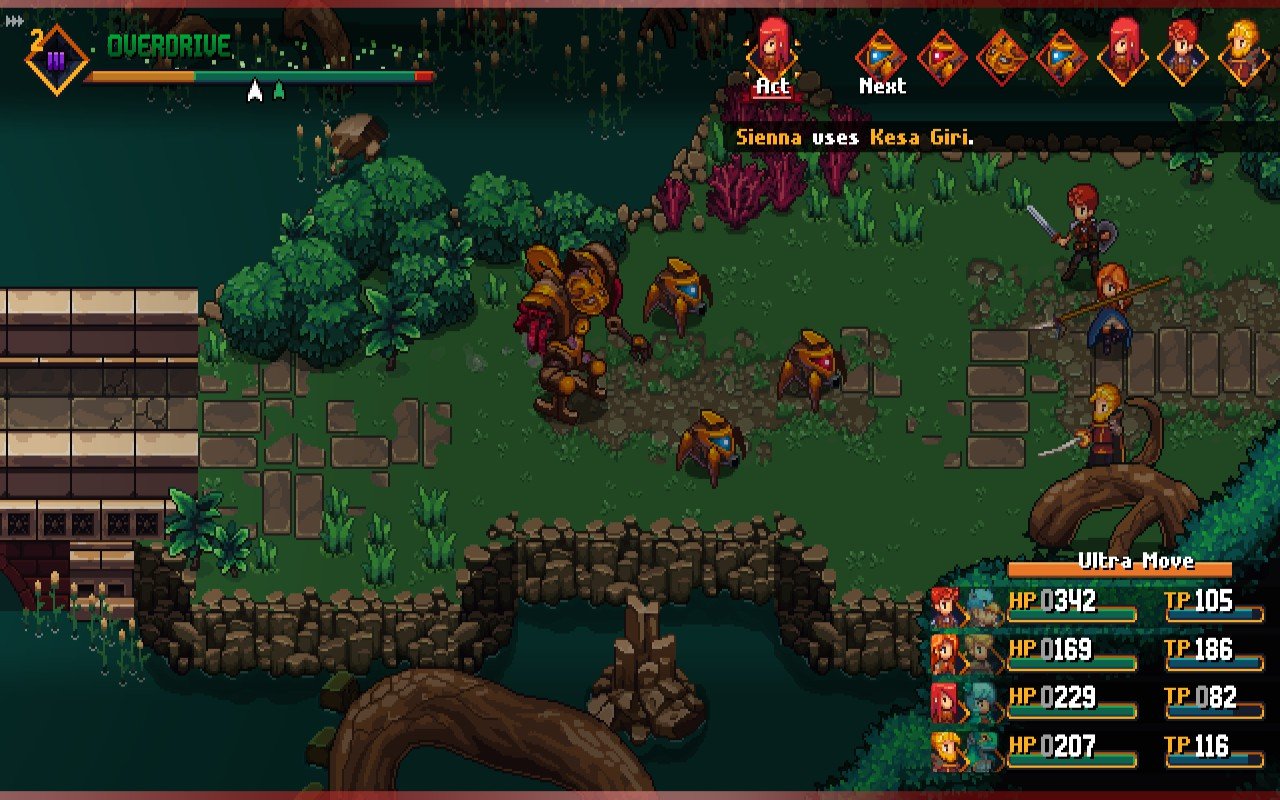


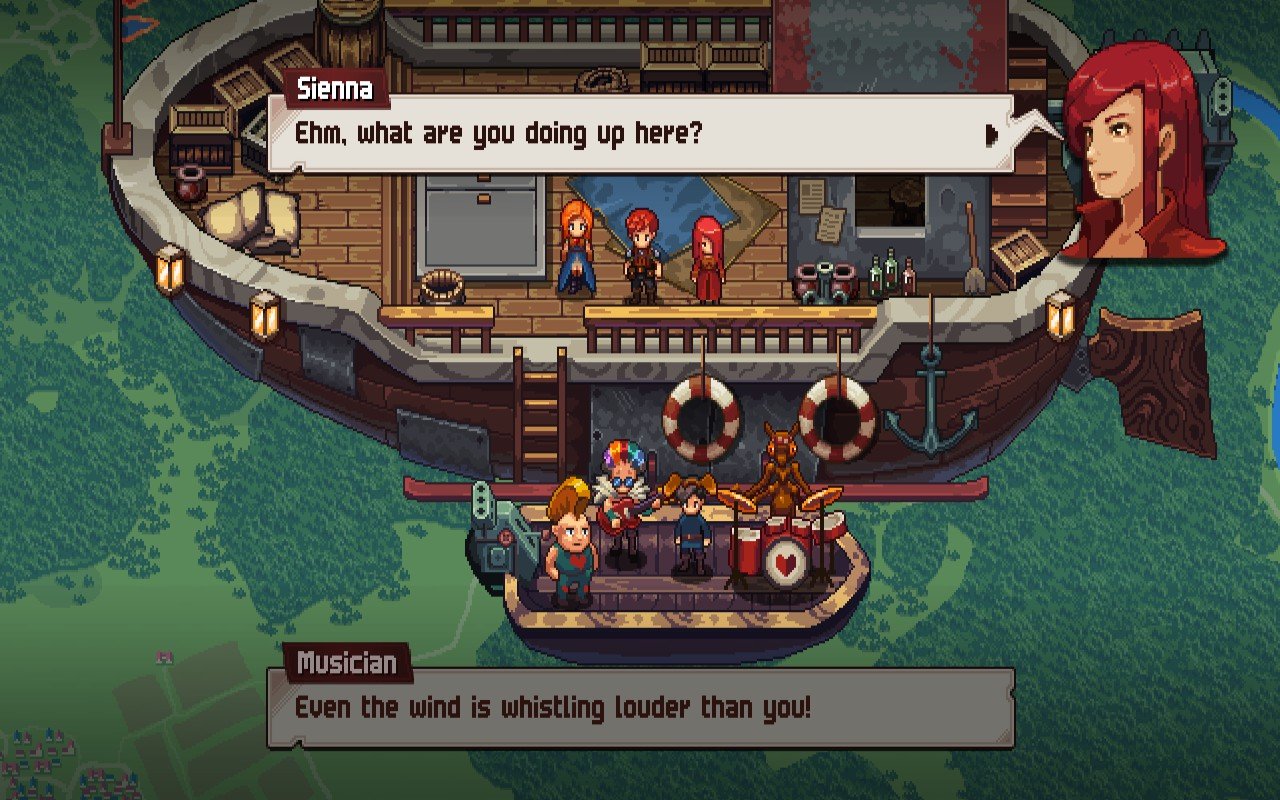




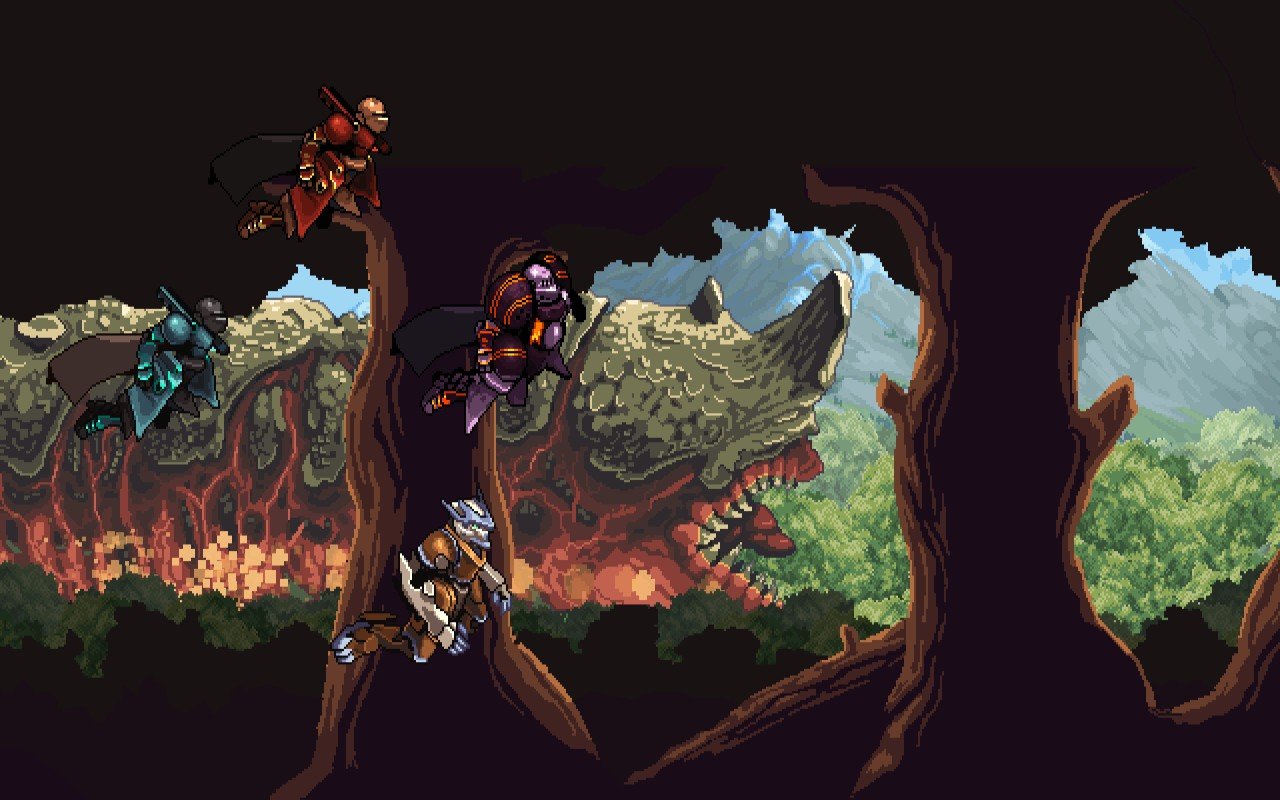


Jeff is the original founder of Analog Stick Gaming. His favorite games include The Witcher III, the Mass Effect Trilogy, Hi-Fi Rush, Stellar Blade, Hellbade: Senua’s Sacrifice, and the Legend of Heroes series, especially Trails of Cold Steel III & IV.